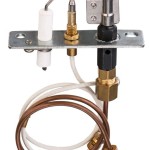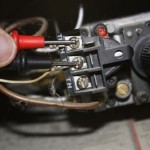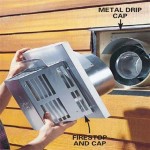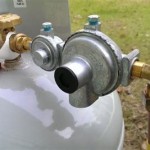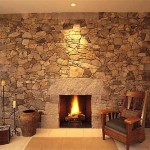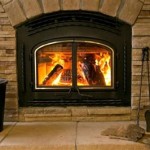```html
How To Hang a TV Above a Gas Fireplace: A Comprehensive Guide
Mounting a television above a gas fireplace has become a popular interior design choice, offering a centralized entertainment focal point. However, this installation requires careful consideration due to the potential heat exposure and structural challenges. This article provides a detailed guide on how to safely and effectively hang a TV above a gas fireplace, covering vital aspects from assessing suitability to executing the installation process.
Assessing the Suitability of the Fireplace
Before commencing any installation, it is crucial to evaluate whether the gas fireplace is truly suitable for safely supporting a television. Heat is the primary concern, and understanding the fireplace's heat output is paramount. Check the manufacturer's specifications for both the fireplace and the television. The TV's operating temperature range should be compared to the potential heat exposure above the fireplace. Ideally, the temperature directly above the fireplace should remain significantly below the television's maximum operating temperature.
Several factors influence the heat experienced by the TV. The fireplace's BTU (British Thermal Unit) rating indicates the amount of heat it generates. A higher BTU rating usually implies more heat radiating upwards. The design of the fireplace also matters. A fireplace with a mantel can effectively deflect heat away from the wall above, acting as a thermal barrier. Conversely, a fireplace with a flush design and no mantel offers minimal heat protection.
Furthermore, the distance between the top of the fireplace and the intended TV mounting location is critical. A greater distance allows for more heat dissipation. It is advisable to measure the temperature above the fireplace during operation for an extended period (e.g., an hour) to get a realistic assessment. Use a digital thermometer to accurately measure the temperature at the proposed TV mounting height. If the temperature consistently exceeds the TV's specified maximum, alternative locations should be considered.
Beyond heat, evaluate the structural integrity of the wall above the fireplace. Determine the wall's composition (e.g., drywall, brick, concrete). Drywall requires proper anchoring to support the TV's weight. Brick and concrete walls are generally more robust but may require specialized drilling tools and anchoring techniques. Locate wall studs to ensure secure mounting. Using a stud finder is essential for identifying stud locations behind the drywall. If the studs are not ideally positioned, a bridging board can be installed between the studs to provide a stable mounting surface.
Finally, consider the ventilation of the fireplace. Ensure that the fireplace is properly vented according to local building codes and the manufacturer's instructions. Inadequate ventilation can lead to excessive heat buildup, increasing the risk of damage to the television and potentially creating a fire hazard. Have the fireplace inspected by a qualified professional to verify proper ventilation and safety.
Selecting the Right Mounting Hardware and Tools
Choosing the appropriate mounting hardware is essential for a safe and secure installation. The weight and size of the television dictate the type of mount required. Consult the TV's specifications for its weight and VESA (Video Electronics Standards Association) mounting pattern. The VESA pattern refers to the standardized hole pattern on the back of the TV used for attaching the mount. Select a mount that is compatible with the TV's VESA pattern and rated to support its weight with a significant safety margin. A mount rated for a weight slightly higher than the TV's actual weight provides an added layer of security.
There are several types of TV mounts available, each with its own advantages and disadvantages. Fixed mounts are the simplest and most affordable option, holding the TV flush against the wall. Tilting mounts allow for slight vertical adjustment, which can improve viewing angles. Full-motion mounts offer the greatest flexibility, allowing the TV to be extended, swiveled, and tilted in various directions. For installations above a fireplace, a tilting or full-motion mount can be beneficial, as it allows the TV to be angled downwards for optimal viewing from a seated position.
The mounting hardware should be of high quality and designed for the specific wall type. For drywall installations, use heavy-duty wall anchors or toggle bolts to secure the mount to the studs. Avoid using flimsy wall anchors, as they may not be able to support the weight of the TV over time. For brick or concrete walls, use masonry screws or concrete anchors specifically designed for these materials. Ensure that the screws or anchors are long enough to penetrate deep into the wall for a secure hold.
In addition to the mounting hardware, gather the necessary tools for the installation. These typically include a stud finder, level, drill, screwdriver, socket wrench, measuring tape, pencil, and safety glasses. A stud finder is essential for locating the studs behind the drywall. A level ensures that the TV is mounted straight. A drill is needed for creating pilot holes and securing the mount to the wall. A screwdriver and socket wrench are used for tightening the screws and bolts. Measuring tape and a pencil are used for marking the mounting location and ensuring accurate alignment. Safety glasses protect your eyes from debris during drilling and installation.
Furthermore, consider using a cable management system to conceal and organize the TV cables. This can help to create a cleaner and more aesthetically pleasing installation. Cable management options include cable sleeves, cable raceways, and in-wall cable concealment kits. An in-wall cable concealment kit allows you to run the cables behind the wall, creating a completely hidden wire solution. Choose a cable management system that is appropriate for your specific installation and wall type.
Executing the Installation Process
With the preliminary assessments complete and the necessary hardware and tools gathered, the actual installation can commence. Prior to any physical work, disconnect the power supply to the fireplace and any nearby electrical outlets to ensure safety. Thoroughly read the instructions included with the TV mount before starting the installation process. These instructions typically provide detailed step-by-step guidance specific to the mount model.
Begin by locating the wall studs using the stud finder. Mark the stud locations with a pencil. Position the TV mount bracket against the wall, aligning it with the marked stud locations. Use a level to ensure that the bracket is perfectly level before marking the screw holes. Drill pilot holes into the studs at the marked locations. The pilot holes should be slightly smaller than the diameter of the screws to ensure a tight fit. Secure the TV mount bracket to the wall using the appropriate screws or bolts. Ensure that the bracket is firmly attached to the wall and can support the weight of the television.
Next, attach the mounting arms to the back of the television using the screws provided with the mount. Ensure that the mounting arms are securely attached to the TV and aligned with the VESA mounting pattern. Carefully lift the television and align the mounting arms with the bracket on the wall. Secure the mounting arms to the bracket using the appropriate screws or bolts. Ensure that all screws and bolts are tightened securely to prevent the TV from falling. Take caution to lift with proper form and potentially enlist assistance, considering the weight and dimensions of the television.
Once the TV is mounted, connect all the necessary cables, such as the power cable, HDMI cables, and any other audio or video cables. Use cable management solutions to neatly organize and conceal the cables. Cable ties, cable sleeves, or cable raceways can be used to bundle and hide the cables behind the TV. If using an in-wall cable concealment kit, carefully follow the instructions to run the cables through the wall. Avoid pinching or crimping the cables, as this can damage them and affect their performance.
After connecting all the cables, turn on the TV and verify that it is functioning properly. Check the picture quality and sound to ensure that everything is working as expected. Make any necessary adjustments to the TV's settings, such as the brightness, contrast, and audio levels. If using a tilting or full-motion mount, adjust the TV's angle for optimal viewing. Ensure that the TV is securely mounted and stable before leaving it unattended. Double-check all screws and bolts to ensure that they are tightened properly. Finally, clean up any debris or materials from the installation process.
```Can I Mount A Tv Over My Fireplace Heatilator

Can I Mount My Tv Above The Fireplace

Can I Mount My Tv Above The Fireplace

Mounting Your Tv Above Fireplace

Can I Mount A Tv Over My Fireplace Warming Trends

Ortal S Innovative Technology Makes It Safe To Mount A Tv Above Your Fireplace

How To Mount A Tv Over Fireplace Vertical Chimney Care
Mounting A Tv Above Your Gas Fireplace Heat Glo

Can I Mount My Tv Above The Fireplace

ᑕ❶ᑐ What To Consider Before Mounting A Tv Above Fireplace
Related Posts


